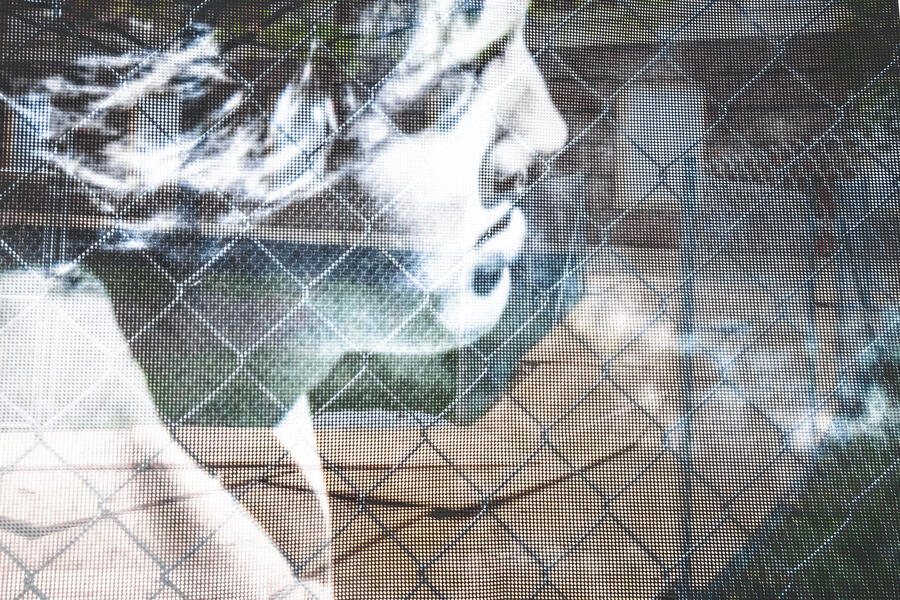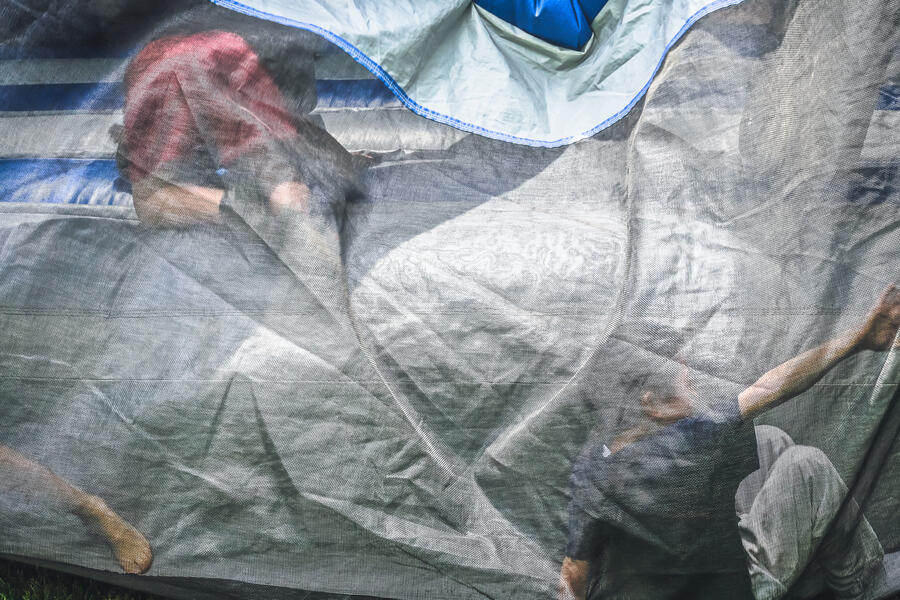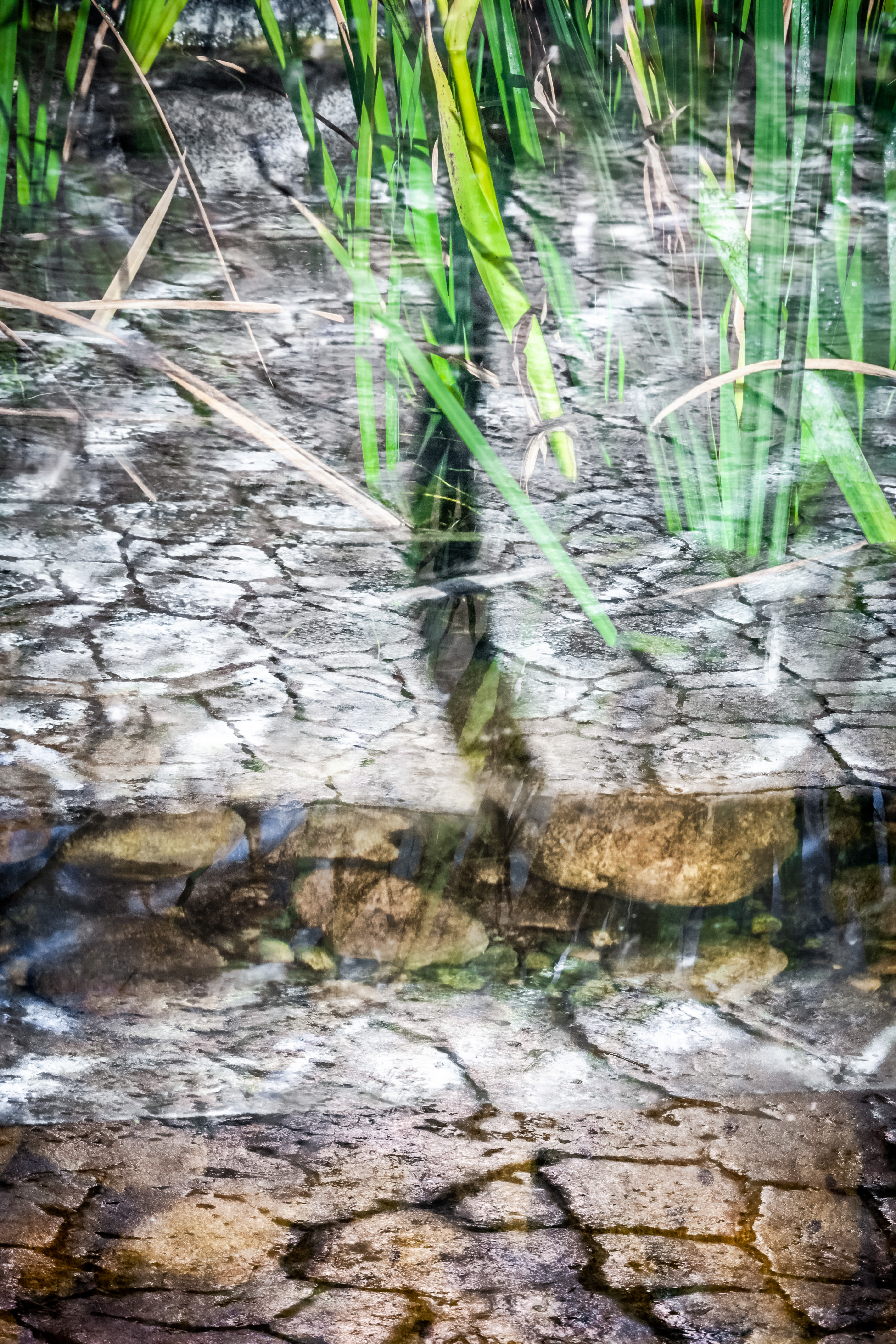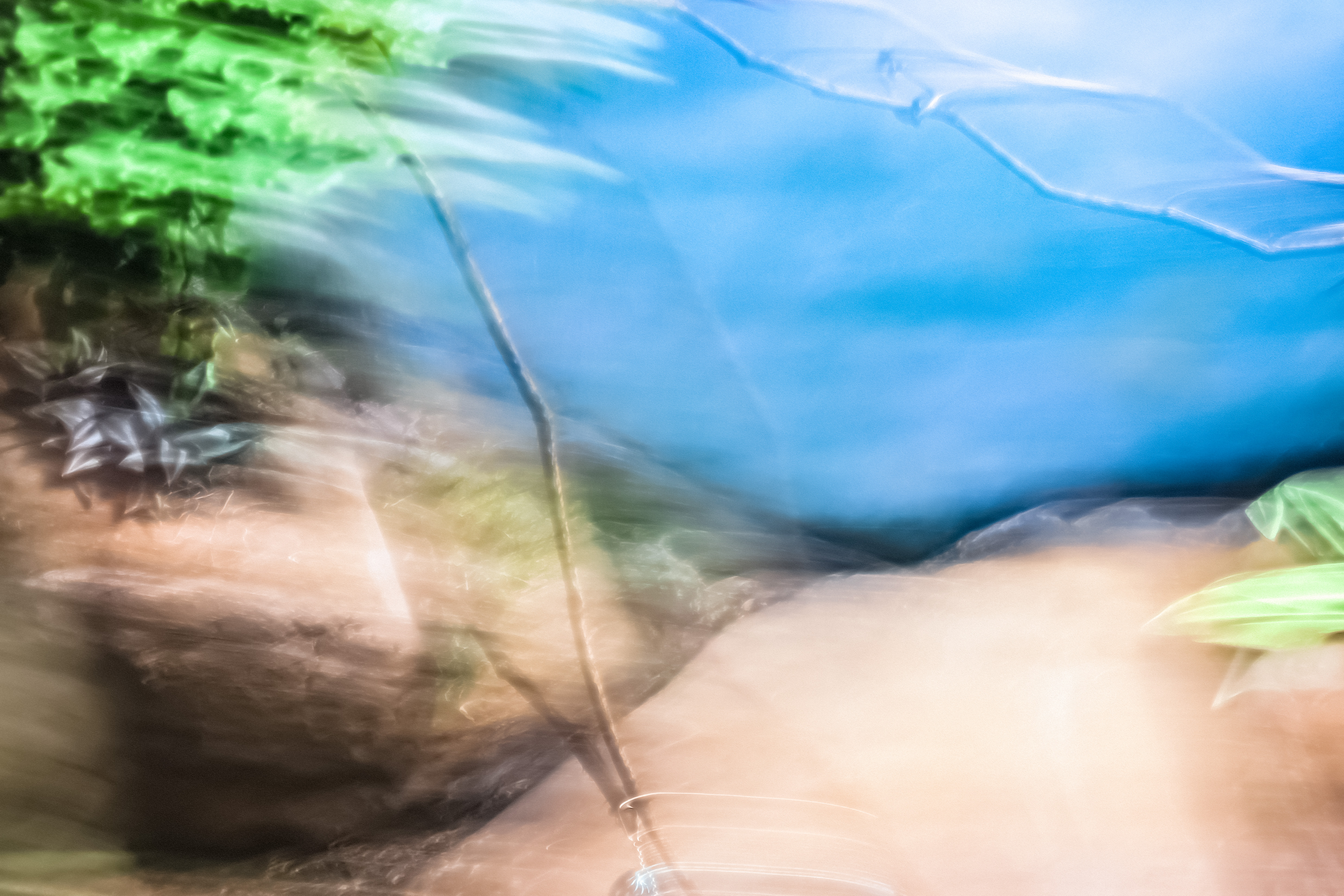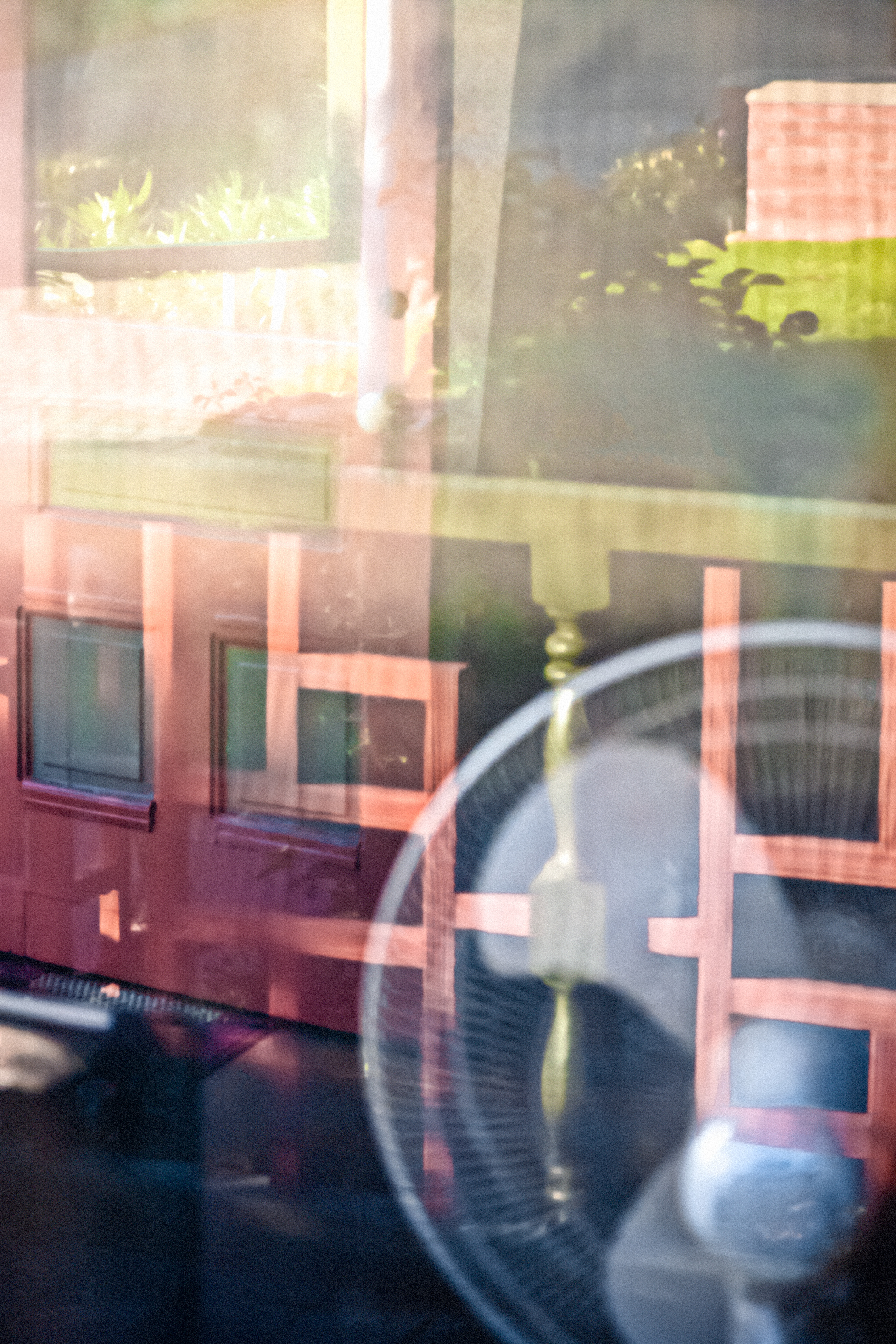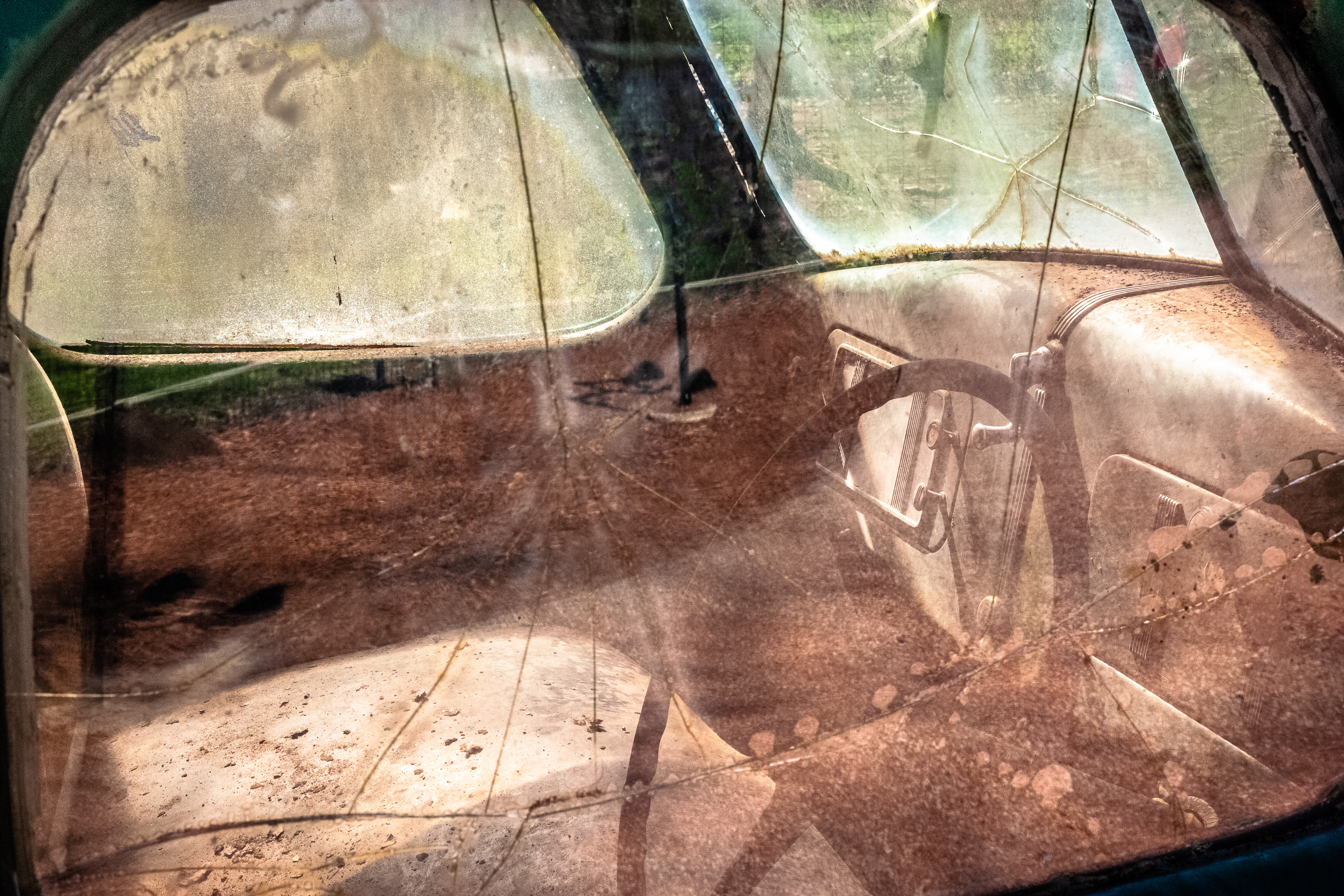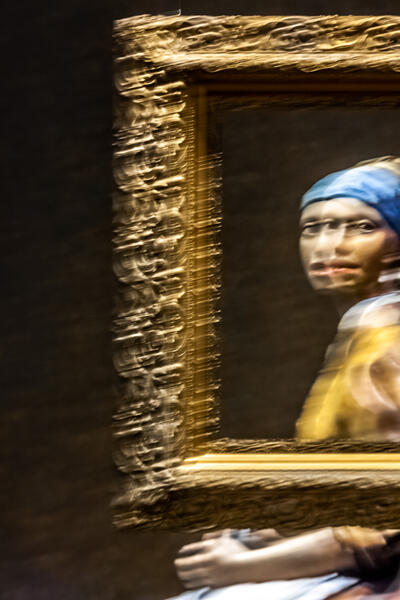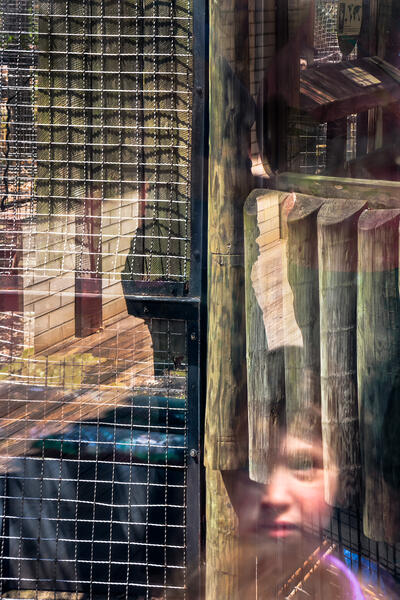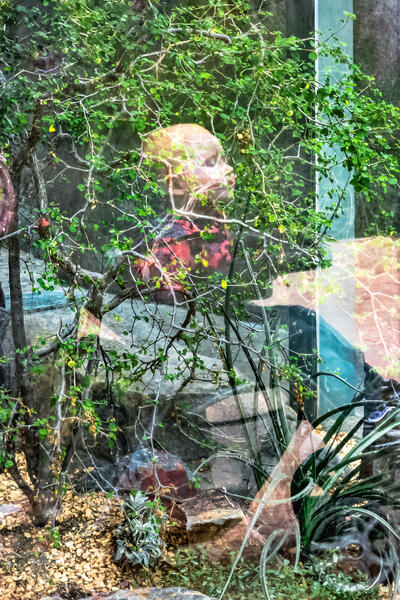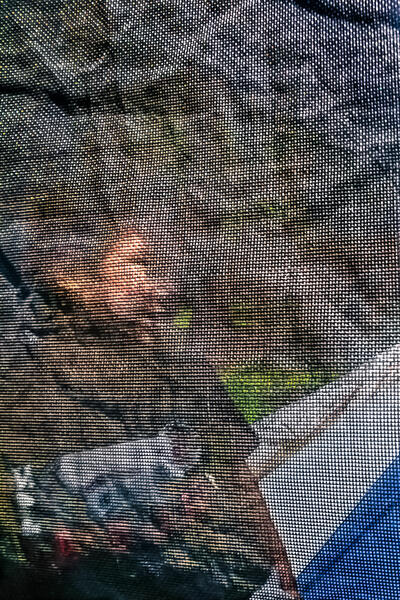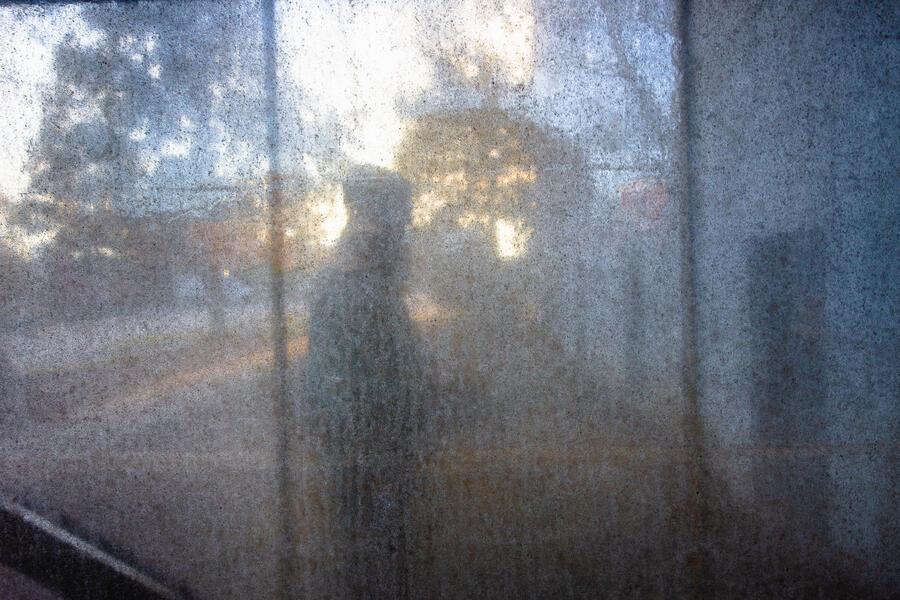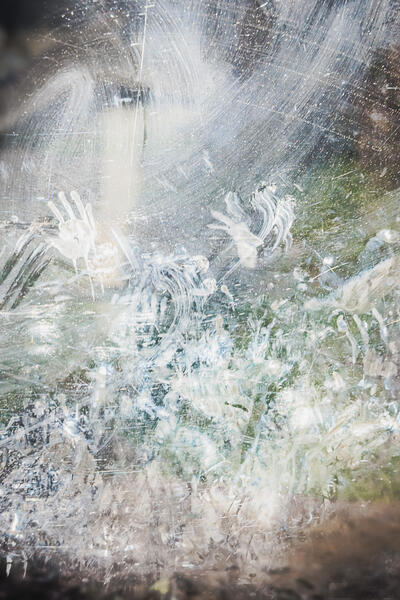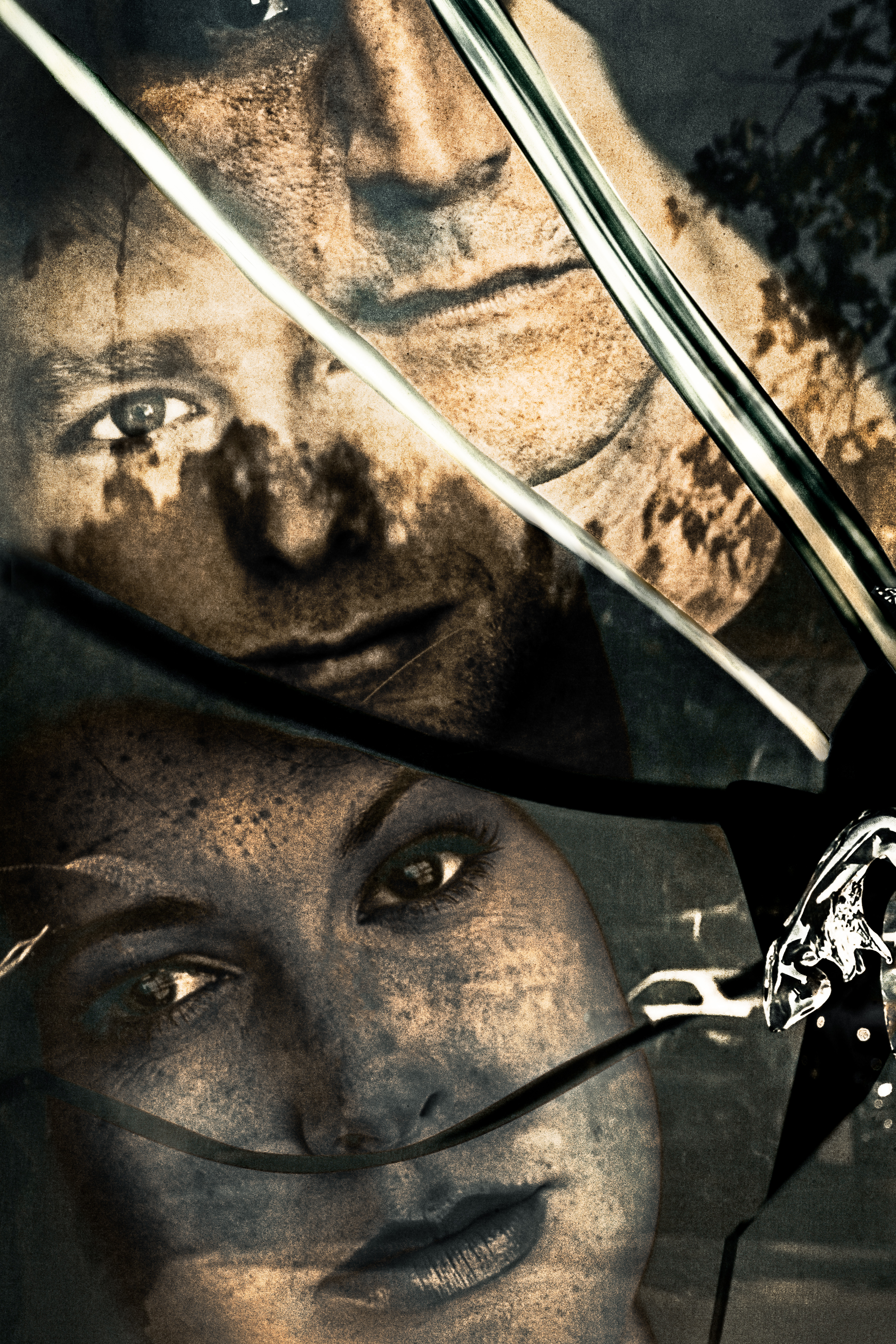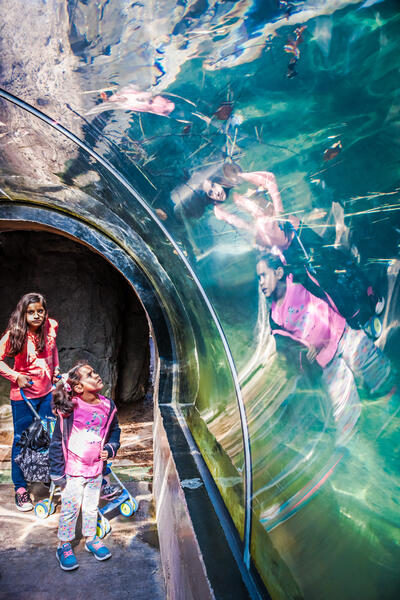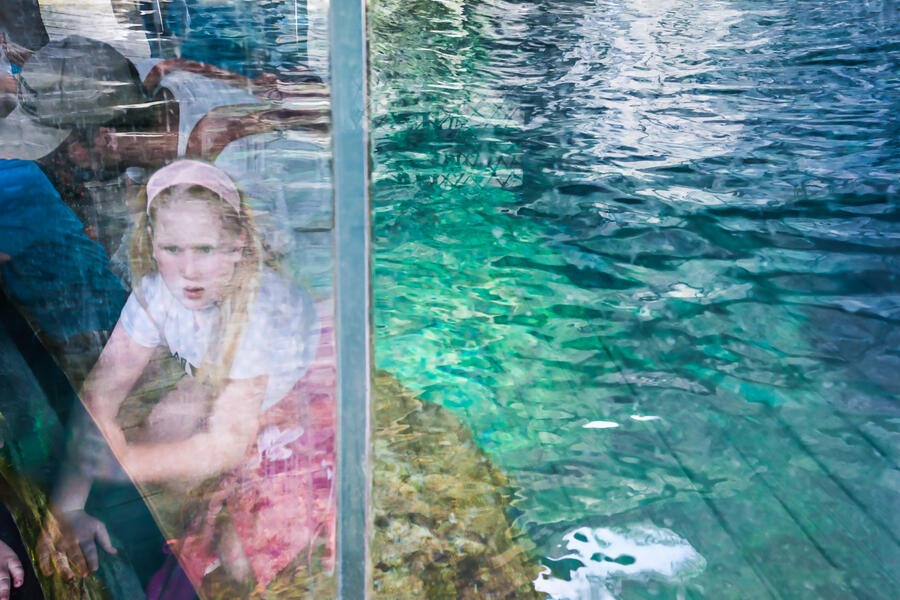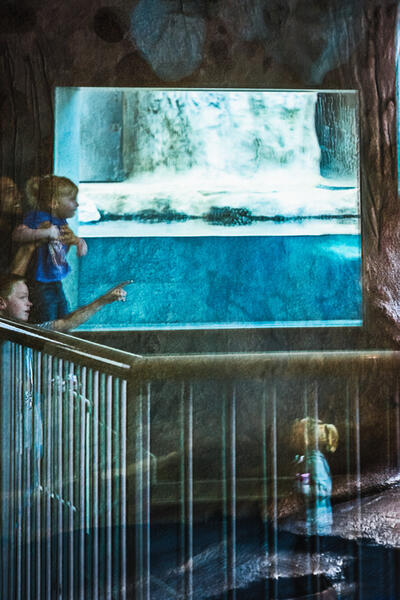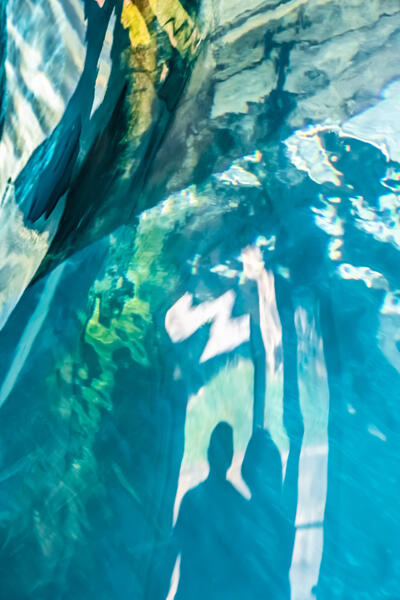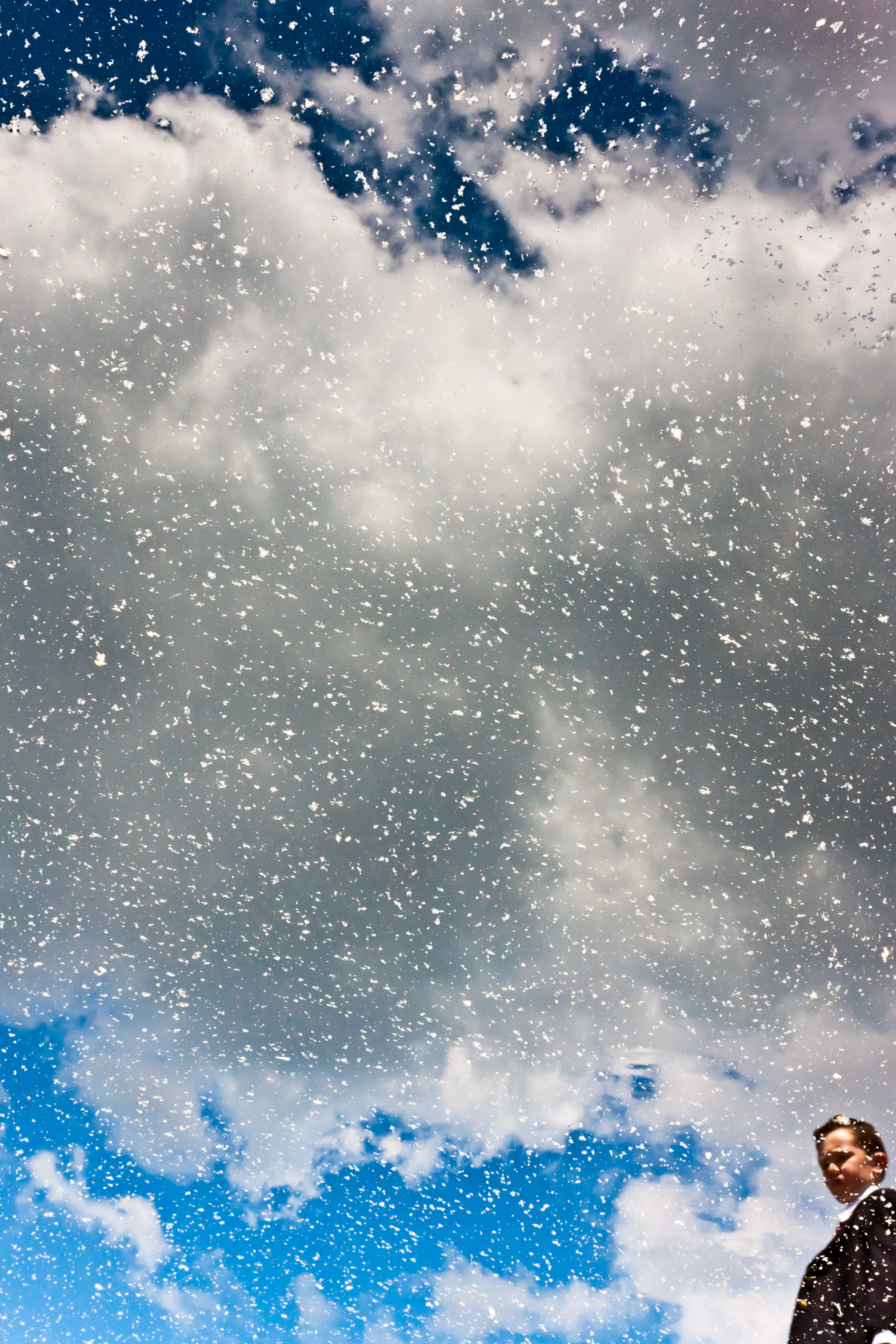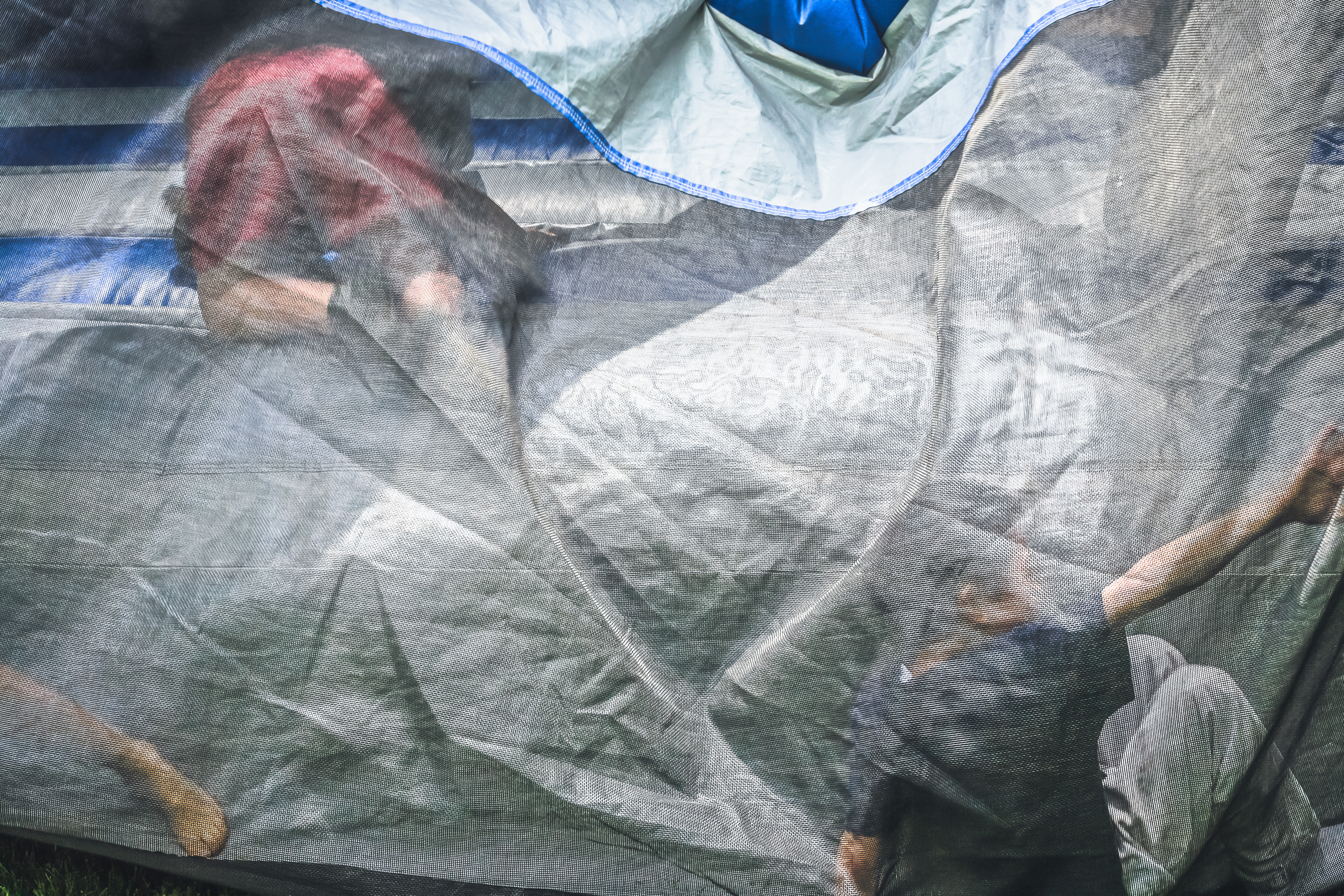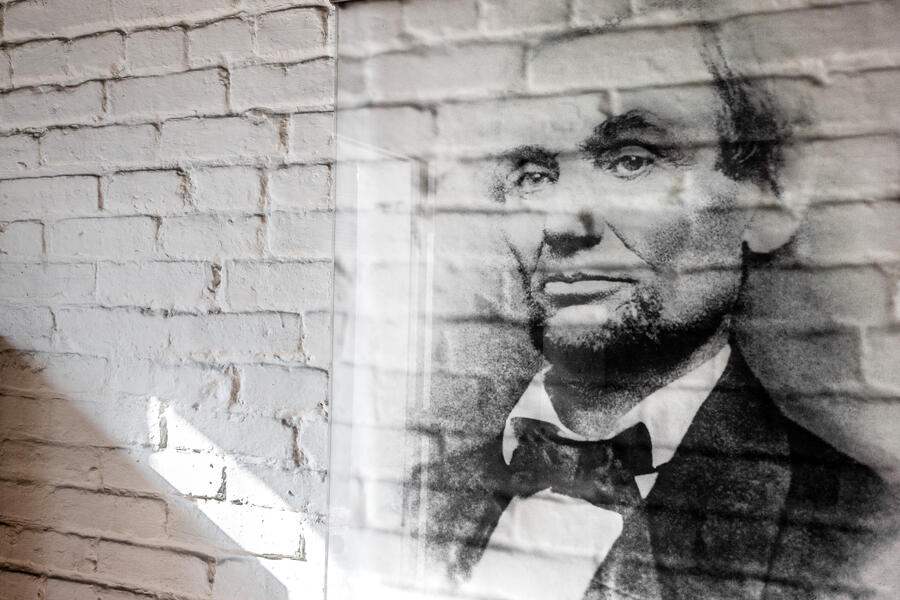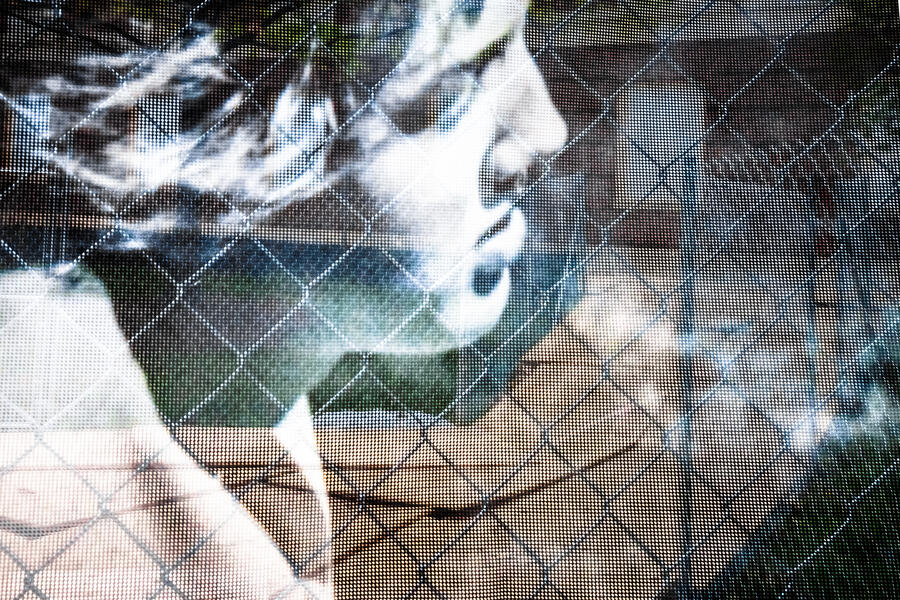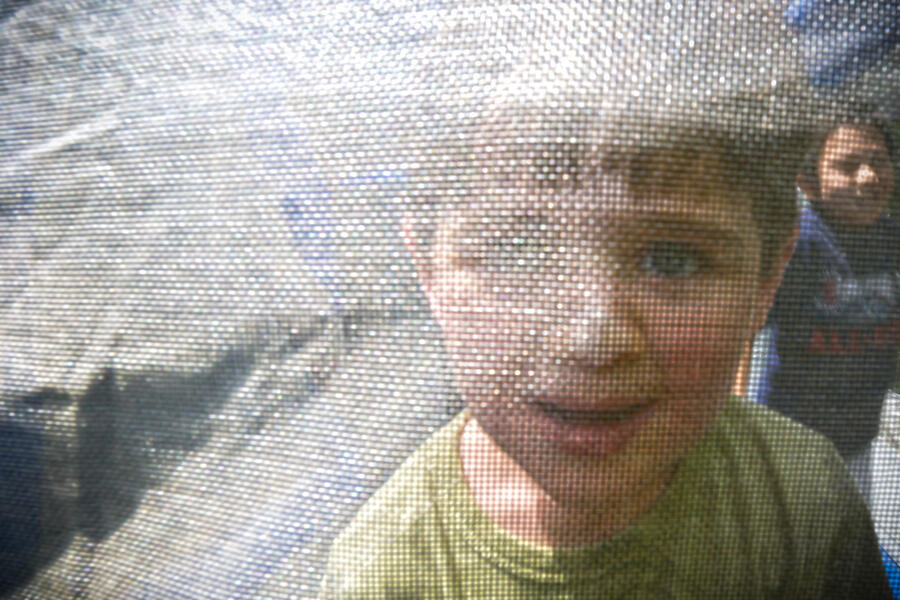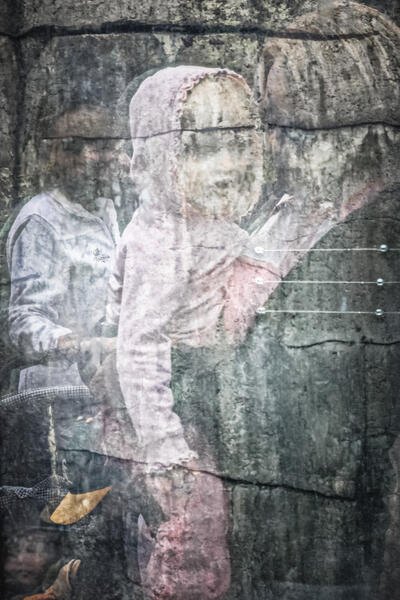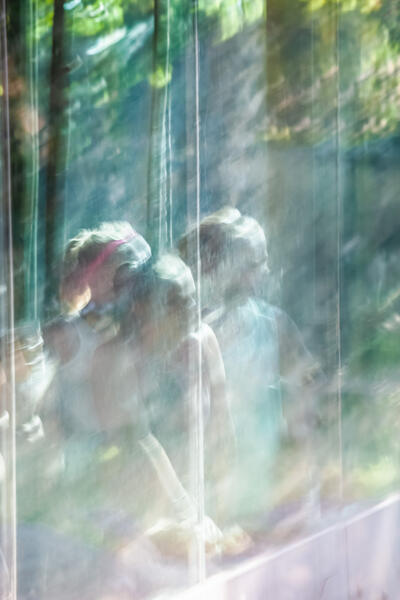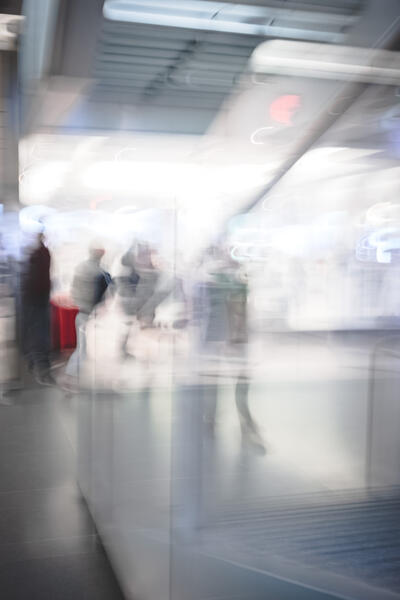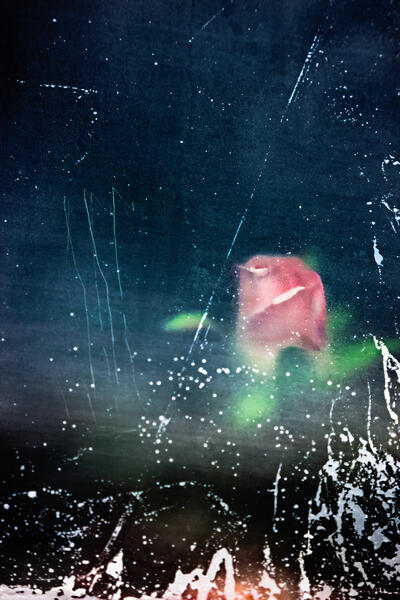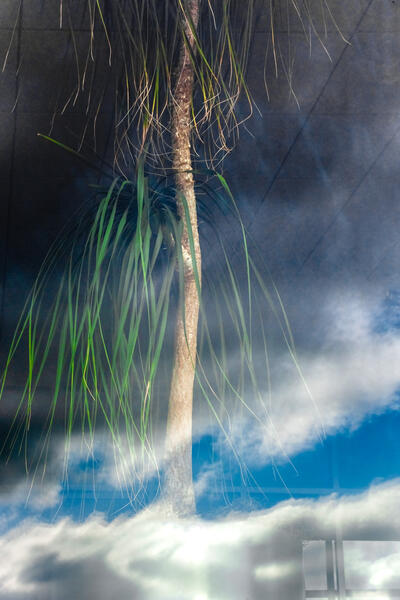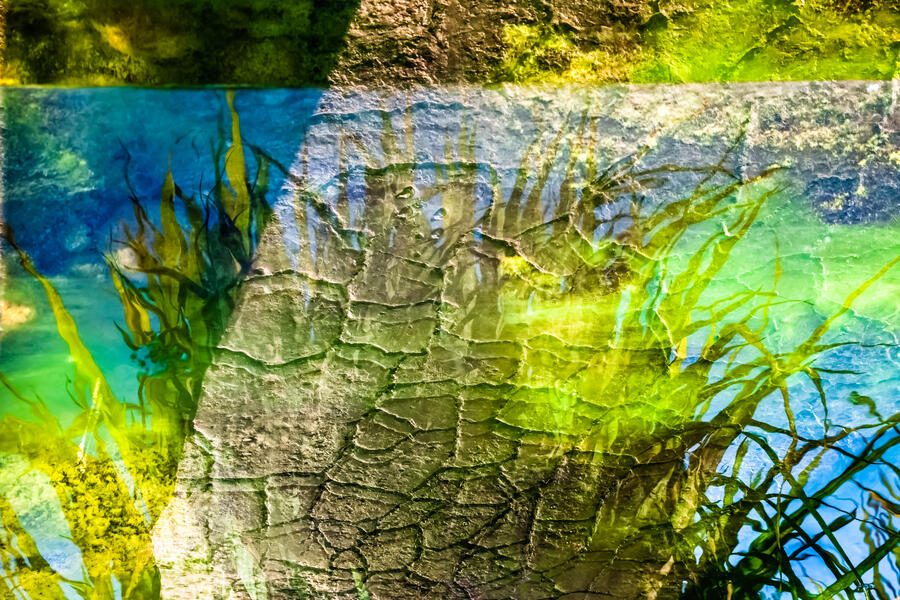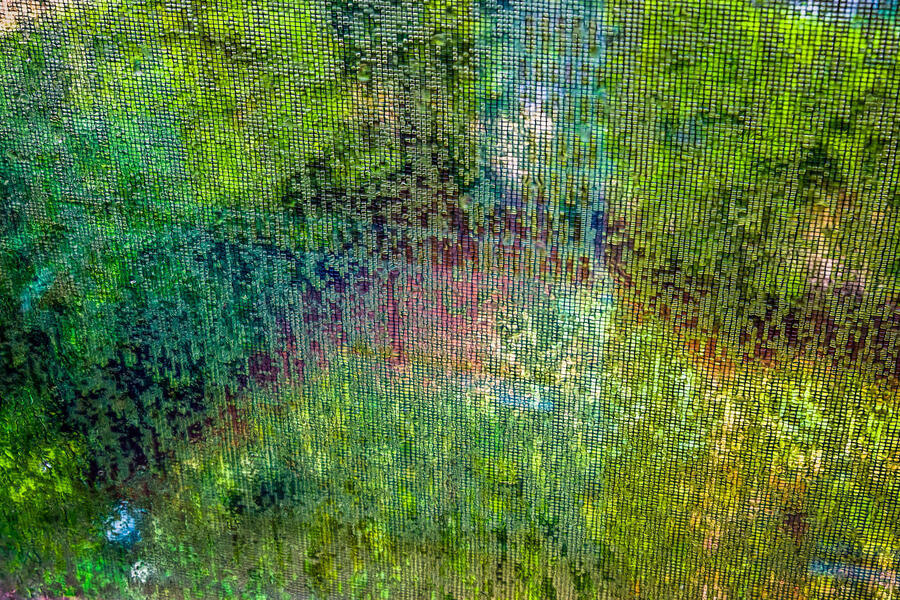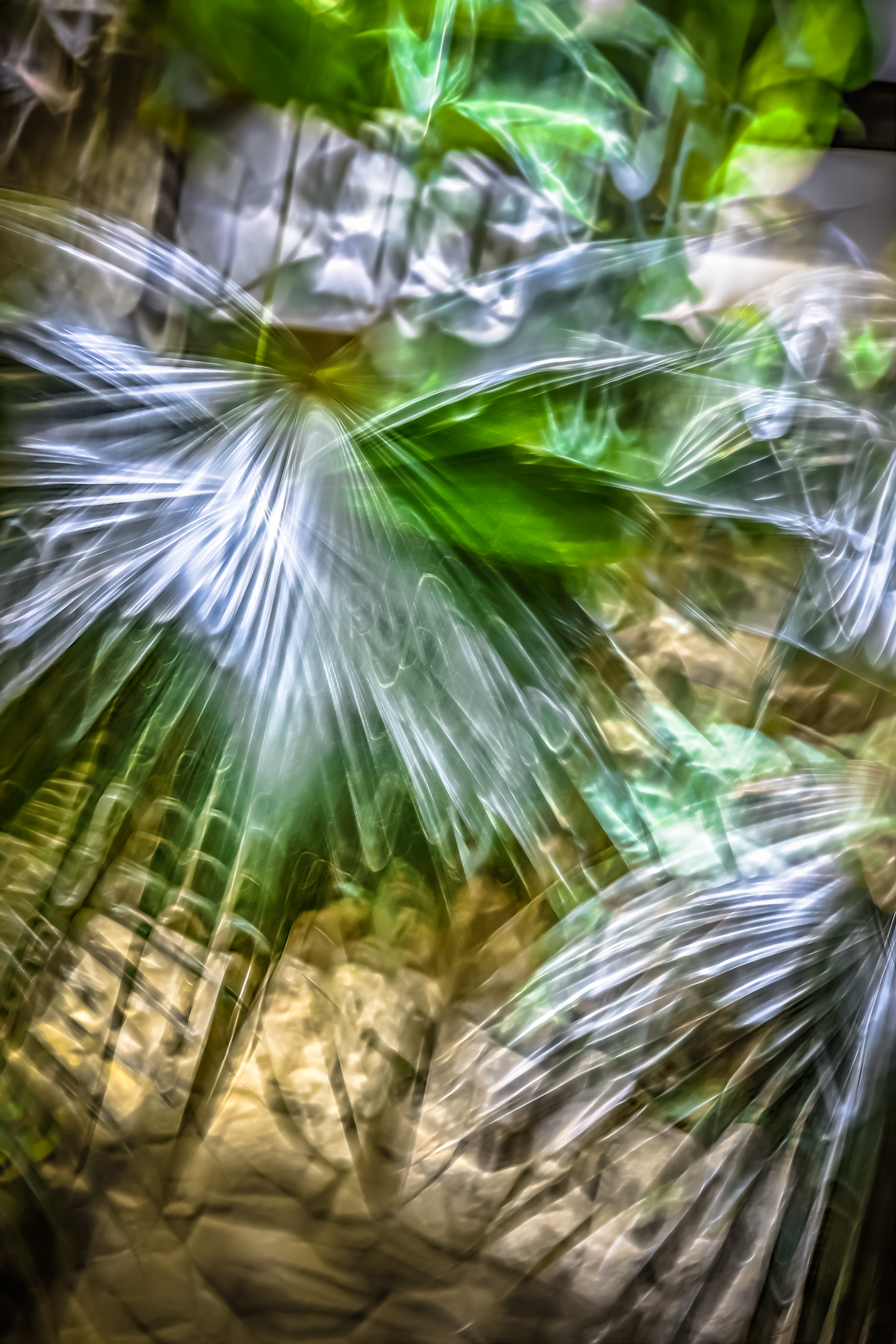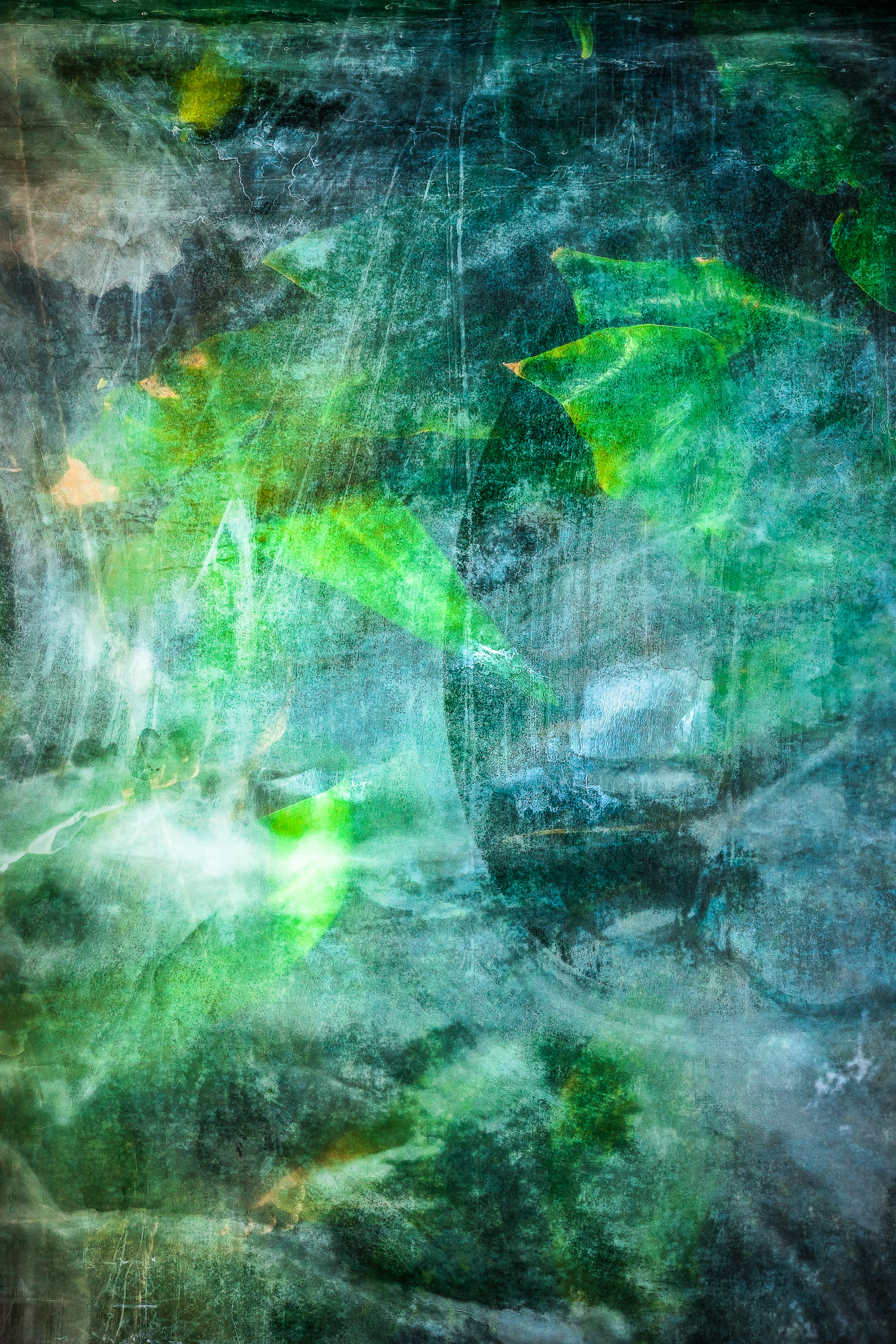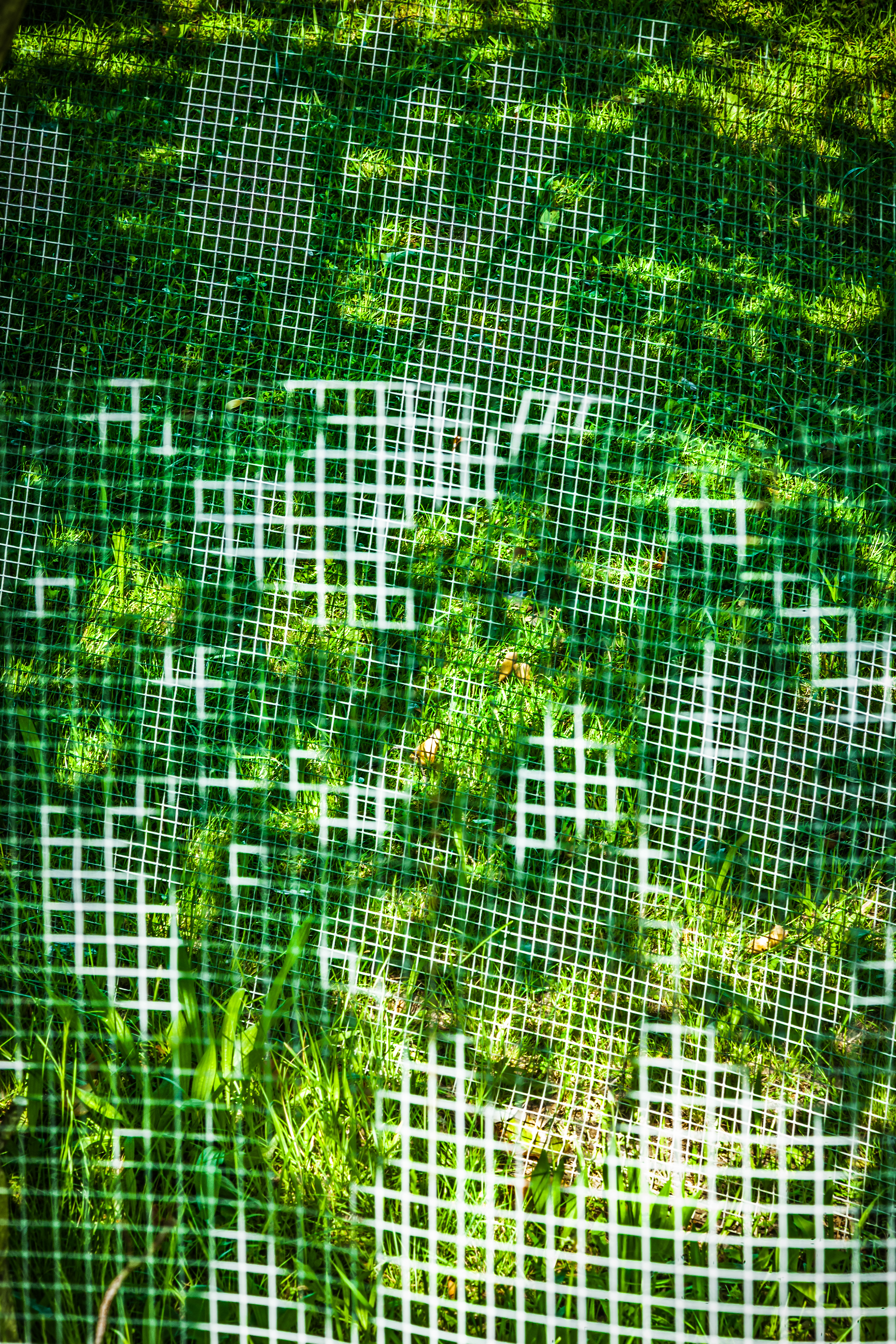Work samples
About Dottie

Much has gone missing in our pandemic years. It is alarming to watch people, animals, birds, habitats, civility and political systems disappear.
My photographic work over the last couple of years depicts disappearance. Each series undergoes a transition from the detailed and distinct to an abstraction obscured by atmospheric haze. The photographic subject matter is difficult to find at the end of these series. It has almost completely disappeared. The photographs become my… more
Habitat 1
Habitat destruction caused by deforestation, pollution, and agricultural development is happening at an alarming rate to our natural landscapes. It brings wildlife closer to human populations, endangering both animals and people. The destruction of habitat has probably caused our global pandemic.
My Habitat 1 series presents photographs of habitats being encroached upon and finally swallowed up by man-made structures. In the first image, the habitat is the main subject of the photograph and is detailed and distinct. The series ends, though, with a wall closing off a landscape... a landscape that is barely visible and disappearing.
The photographs of each project presented on the Baker site are meant to be seen as a series. At first, images are focused and distinct, but as the series progresses, successive images become more and more abstract and less photographic. It is hard to make out their detail. Finally, in the last photograph of each series, reality has all but disappeared.
My photographic style lends itself well to the formation of these series. I have developed my own techniques for capturing reflections and representing transparency. My camera movement technique causes subject matter to become transparent and detail to disappear. These techniques have allowed me to create images with subjects that appear to disappear.
To facilitate the importance of sequence in these series, I have included, as the last artwork of each project, a slide show video of all images in the series. This video provides a sense of progression that enables viewers to more fully understand the serial nature of these projects.
All photographs are 20” x 30” pigment ink prints.
-
 Wall Within Rock30" x 20" Pigment Ink Photographic Print / A fortress photographed from the base of one of the San Francisco hills. The natural world is taking back the man-made structures.
Wall Within Rock30" x 20" Pigment Ink Photographic Print / A fortress photographed from the base of one of the San Francisco hills. The natural world is taking back the man-made structures. -
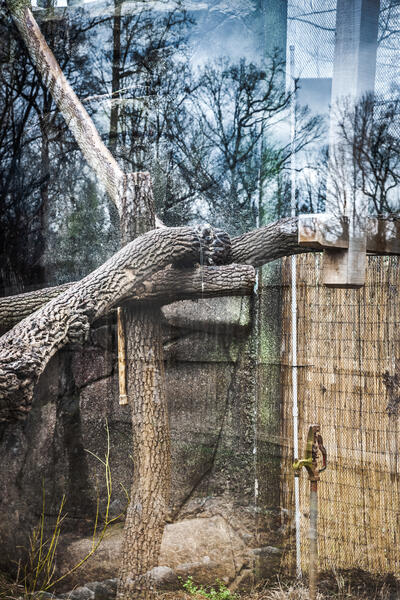 Shared Space20" x 30" Pigment Ink Photographic Print / Reflection of trees on window glass meld with a rural animal enclosure in this photograph. The trees in the landscape recede and disappear behind the enclosure.
Shared Space20" x 30" Pigment Ink Photographic Print / Reflection of trees on window glass meld with a rural animal enclosure in this photograph. The trees in the landscape recede and disappear behind the enclosure. -
 Hidden Truth20" x 30" Pigment Ink Photographic Print / A reflection of the sheen of sunlight on a wet walkway melds with and obscures one of my favorite riparian environments. You can see the actual walkway at the bottom of the photograph. The river environment disappears into the walkway reflection.
Hidden Truth20" x 30" Pigment Ink Photographic Print / A reflection of the sheen of sunlight on a wet walkway melds with and obscures one of my favorite riparian environments. You can see the actual walkway at the bottom of the photograph. The river environment disappears into the walkway reflection. -
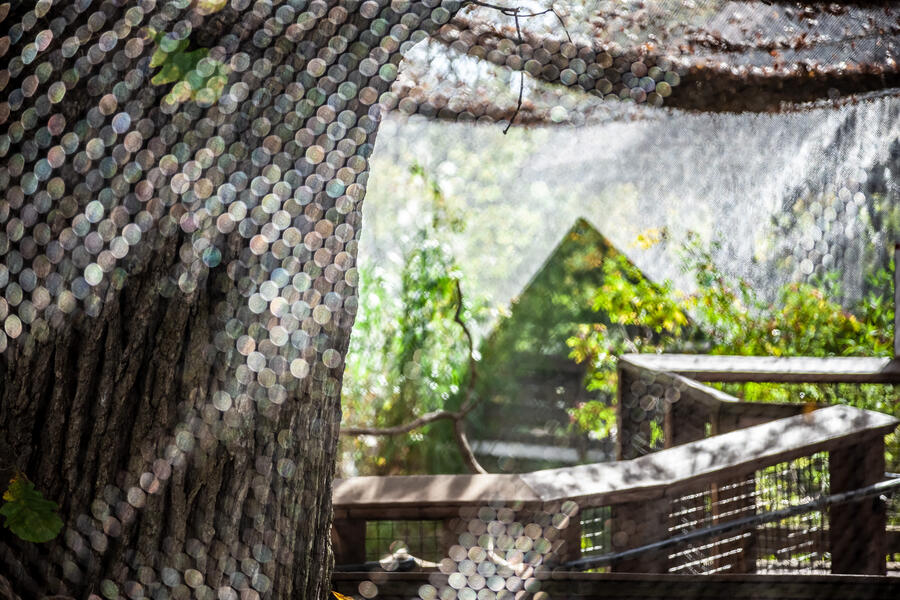 Outside In30" x 20" Pigment Ink Photographic Print / The radiance of sunlight on the netting of an avian environment produces bokeh, out of focus shapes when photographed at the widest camera aperture. The triangular focal point of the photograph was created by the light and shade in the enclosure. With the lack of focus and bokeh texture, the details of the habitat disappear.
Outside In30" x 20" Pigment Ink Photographic Print / The radiance of sunlight on the netting of an avian environment produces bokeh, out of focus shapes when photographed at the widest camera aperture. The triangular focal point of the photograph was created by the light and shade in the enclosure. With the lack of focus and bokeh texture, the details of the habitat disappear. -
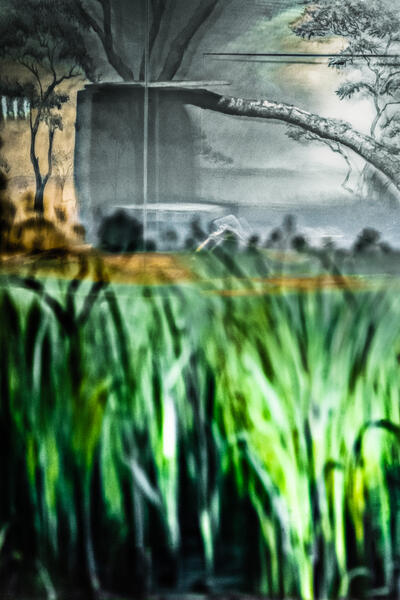 Shared and Drawn Habitat20" x 30" Pigment Ink Photographic Print / This low-light indoor zoo enclosure enhanced with artwork and living plants, is an interesting juxtaposition of the man-made and the natural. In this instance, the man-made artwork is representational of the natural world and the living plants exist in a man-made structure. The lack of camera focus on the plants, makes them appear to vanish.
Shared and Drawn Habitat20" x 30" Pigment Ink Photographic Print / This low-light indoor zoo enclosure enhanced with artwork and living plants, is an interesting juxtaposition of the man-made and the natural. In this instance, the man-made artwork is representational of the natural world and the living plants exist in a man-made structure. The lack of camera focus on the plants, makes them appear to vanish. -
 Sky Intrusion30" x 20" Pigment Ink Photographic Print / My camera movement at time of capture softened and obscured this hot, dusty hiking trail. The whole landscape races off the frame to oblivion.
Sky Intrusion30" x 20" Pigment Ink Photographic Print / My camera movement at time of capture softened and obscured this hot, dusty hiking trail. The whole landscape races off the frame to oblivion. -
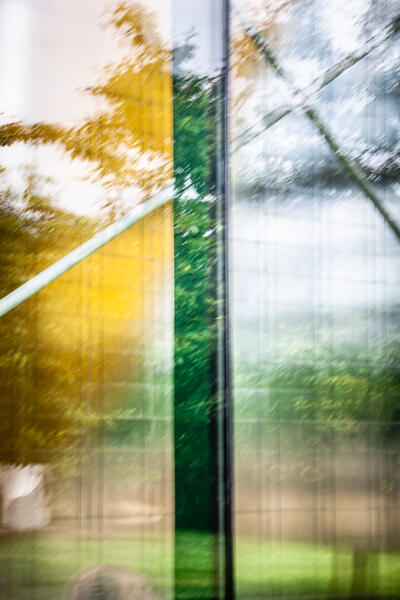 Almost Absent20" x 30" Pigment Ink Photographic Print / Camera movement and window reflection create the perception of disappearance in this photograph of green space in a city park. It looks like a door is being closed on the environment. The green space is disappearing.
Almost Absent20" x 30" Pigment Ink Photographic Print / Camera movement and window reflection create the perception of disappearance in this photograph of green space in a city park. It looks like a door is being closed on the environment. The green space is disappearing. -
The Year of Disappear - Habitat 1 Video Slideshow
Habitat 2
Habitat destruction also includes human habitat. I have seen first-hand the hollowing out of small towns in America. Beautiful, vintage main street towns are left starkly empty because people have left to work jobs elsewhere. The people who still live in these towns have been devastated by economic downturns, as well as the pandemic.
My Habitat 2 series presents views of small-town rural America. The progression of this series symbolically follows these towns as they devolve into decay. The sharp definition of the first image contrasts strikingly with the last, a hazy view out a train window. These towns, peoples' hometowns, are disappearing.
My photographic style lends itself well to the formation of this series. I have developed my own techniques for capturing reflections and representing transparency. My camera movement technique causes subject matter to become transparent and detail to disappear. These techniques have allowed me to create images with subjects that appear to disappear.
To facilitate the perception of each Year of Disappear series, I have included, as the last artwork of each project, a slide show video of all images in the series. This video will provide a smooth progression of images in the series from corporeal existence to nothingness. And, it makes viewing my 2021 work easier.
All photographs in this series are 20” x 30” pigment ink prints.
-
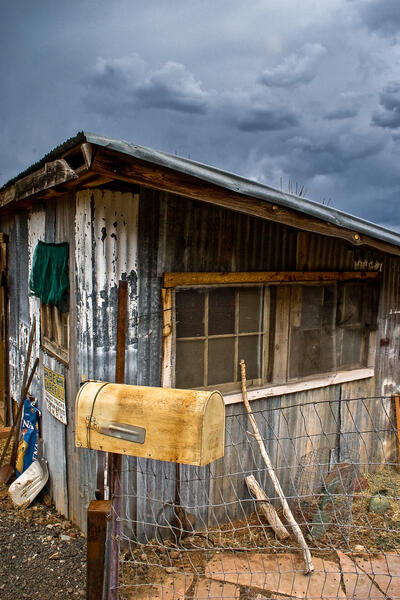 Home20” x 30” Pigment Ink Photographic Print / A small town building in Arizona on a rural mail delivery route. Small towns, human habitats, are disappearing as people find jobs in cities.
Home20” x 30” Pigment Ink Photographic Print / A small town building in Arizona on a rural mail delivery route. Small towns, human habitats, are disappearing as people find jobs in cities. -
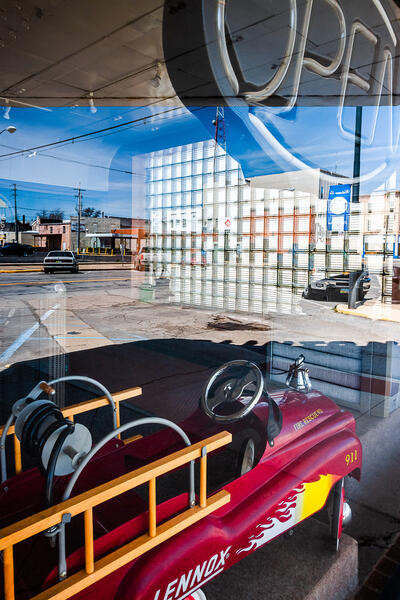 The Engine Eaten20" x 30" Pigment Ink Photographic Print / A reflection of an empty small town main street shares this photograph's composition with a window display of used toys. There are a number of closed shops here. The town is beginning to disappear.
The Engine Eaten20" x 30" Pigment Ink Photographic Print / A reflection of an empty small town main street shares this photograph's composition with a window display of used toys. There are a number of closed shops here. The town is beginning to disappear. -
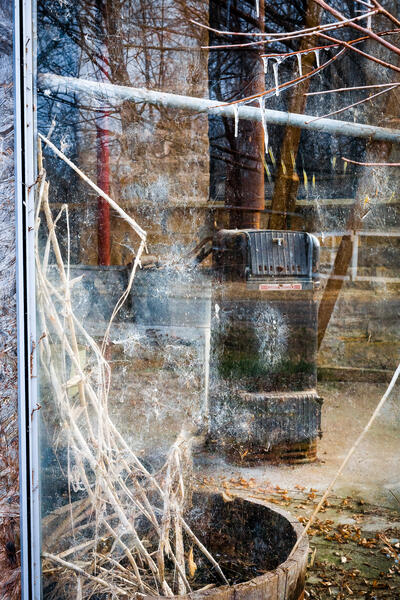 Vintage Heat20" x 30" Pigment Ink Photographic Print / This photograph, taken through an icy, dirty window obscures the view of a outdated heating system in an alleyway building. It suggests the demise and disappearance of this small town. Much of the town is actually boarded up and the people gone. The town is disappearing but people miss it and still return for a visit.
Vintage Heat20" x 30" Pigment Ink Photographic Print / This photograph, taken through an icy, dirty window obscures the view of a outdated heating system in an alleyway building. It suggests the demise and disappearance of this small town. Much of the town is actually boarded up and the people gone. The town is disappearing but people miss it and still return for a visit. -
 Rural Room20" x 30" Pigment Ink Photographic Print / A photograph taken of an interior obscured by reflection and a hazy screen denotes its ephemeral nature. The whole town is fading away.
Rural Room20" x 30" Pigment Ink Photographic Print / A photograph taken of an interior obscured by reflection and a hazy screen denotes its ephemeral nature. The whole town is fading away. -
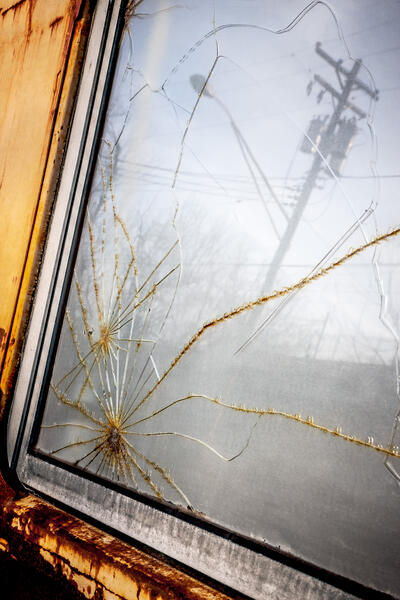 Decline20" x 30" Pigment Ink Photographic Print / Rusty metal and broken window glass frames this photographic composition taken in a small town. The buildings of the town are barely seen in the window reflection. The dying town has disappeared into the haze.
Decline20" x 30" Pigment Ink Photographic Print / Rusty metal and broken window glass frames this photographic composition taken in a small town. The buildings of the town are barely seen in the window reflection. The dying town has disappeared into the haze. -
 Yesterday30" x 20" Pigment Ink Photographic Print / This abandoned car is photographed through reflection and the dirty glass of its windows. The town is mostly gone but some structures remain as photographic objects. There is a sense of sadness here.
Yesterday30" x 20" Pigment Ink Photographic Print / This abandoned car is photographed through reflection and the dirty glass of its windows. The town is mostly gone but some structures remain as photographic objects. There is a sense of sadness here. -
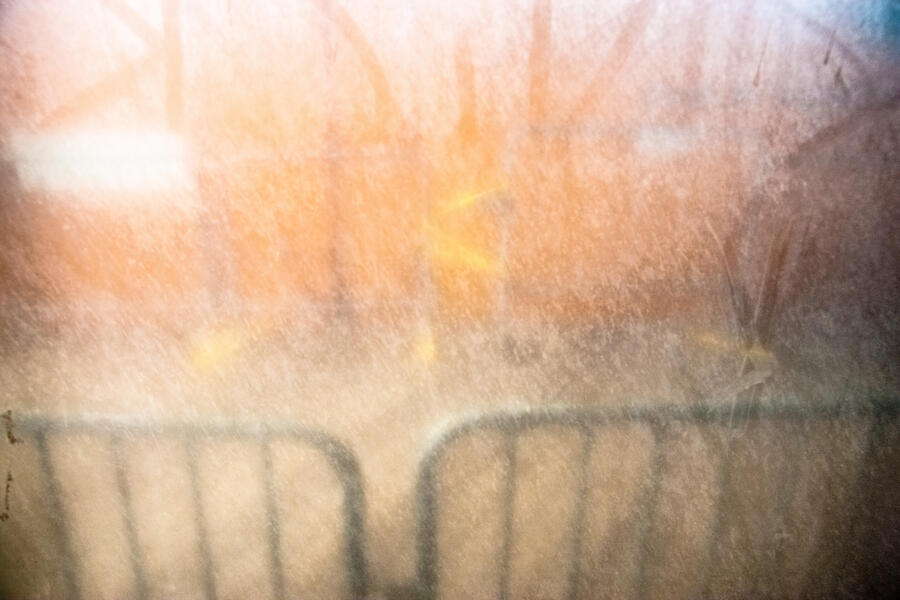 View Barely Through30" x 20" Pigment Ink Photographic Print / Looking through the dirty window of a train car and moving my camera at time of image capture created this photograph of a painterly disappearing view.
View Barely Through30" x 20" Pigment Ink Photographic Print / Looking through the dirty window of a train car and moving my camera at time of image capture created this photograph of a painterly disappearing view. -
The Year of Disappear - Habitat 2 Video Slideshow
People 1
Friends, family, neighbors have disappeared during the pandemic. Their forms fade. I miss them.
I have built commemorative photographic series for people lost to the pandemic.
In the first few photographs of each series, people are focused and distinct, but as the series progresses, the people become blurred and out of focus. It is hard to make out their features. Finally, they can barely be seen. We have lost them.
The main consideration of all three People series is the parent-child relationship. It is terrible to lose friends and neighbors but the most terrible loss is that of a family member. Everyone is someone’s child and every child has a mother and father.
I have organized the three People series according to their color and tonality, and have also considered three of the four elements that ancient Greeks believed made up all matter: earth, air, and water. The belief was that everything, including human beings were made up of combinations of the four elements.
The People 1 series presents photographs that are warm in color and dark in tonality. They are earthy and often contain glimpses of wood and landscape. I have friends and family who have strong links to the land as nature lovers, farmers, and equestrians.
My photographic style lends itself well to the formation of this series. I have developed my own techniques for capturing reflections and representing transparency. My camera movement technique causes subject matter to become transparent and detail to disappear. These techniques have allowed me to create images with subjects that appear to disappear.
To facilitate the perception of each Year of Disappear series, I have included, as the last artwork of each project, a slide show video of all images in the series. This video will provide a smooth progression of images in the series from corporeal existence to nothingness. And, it makes viewing my 2021 work easier.
All photographs in this series are 20” x 30” pigment ink prints.
People 2
I have built commemorative photographic series for people lost to the pandemic.
In the first few photographs of each series, people are focused and distinct, but as the series progresses, the people become blurred and out of focus. It is hard to make out their features. Finally, they can barely be seen. We have lost them.
The main consideration of all three People series is the parent-child relationship. It is terrible to lose friends and neighbors but the most terrible loss is that of a family member. Everyone is someone’s child and every child has a mother and father.
I have organized the three People series according to their color and tonality, and have also considered three of the four elements that ancient Greeks believed made up all matter: earth, air, and water. The belief was that everything, including human beings were made up of combinations of the four elements.
The People 2 series presents photographs where blue and cyan predominate and water movement is suggested. I grew up by the ocean and my family’s contentment and pleasure has always been linked to water.
My photographic style lends itself well to the formation of this series. I have developed my own techniques for capturing reflections and representing transparency. My camera movement technique causes subject matter to become transparent and detail to disappear. These techniques have allowed me to create images with subjects that appear to disappear.
To facilitate the perception of each Year of Disappear series, I have included, as the last artwork of each project, a slide show video of all images in the series. This video will provide a smooth progression of images in the series from corporeal existence to nothingness. And, it makes viewing my 2021 work easier.
All photographs in this series are 20” x 30” pigment ink prints.
People 3
I have built commemorative photographic series for people lost to the pandemic.
In the first few photographs of each series, people are focused and distinct, but as the series progresses, the people become blurred and out of focus. It is hard to make out their features. Finally, they can barely be seen. We have lost them.
The main consideration of all three People series is the parent-child relationship. It is terrible to lose friends and neighbors but the most terrible loss is that of a family member. Everyone is someone’s child and every child has a mother and father.
I have organized the three People series according to their color and tonality, and have also considered three of the four elements that ancient Greeks believed made up all matter: earth, air, and water. The belief was that everything, including human beings were made up of combinations of the four elements.
The People 3 series presents photographs that are achromatic and high key. There is an airy, transparent nature to them. My own child loved being in the air whether on amusement park rides or flying helicopters for the Navy.
My photographic style lends itself well to the formation of this series. I have developed my own techniques for capturing reflections and representing transparency. My camera movement technique causes subject matter to become transparent and detail to disappear. These techniques have allowed me to create images with subjects that appear to disappear.
To facilitate the perception of each Year of Disappear series, I have included, as the last artwork of each project, a slide show video of all images in the series. This video will provide a smooth progression of images in the series from corporeal existence to nothingness. And, it makes viewing my 2021 work easier.
All photographs in this series are 20” x 30” pigment ink prints.
Botanics 1
The Botanics 1 series presents photographs of plants associated with water. These are photographs of plants rather than of trees and forests. The sharp definition of the first image of the series contrasts strikingly with that of the last, a view of our garden abstracted by summer rain on the window screen.
These photographs are meant to be seen as a series. The first images are focused and distinct, but as the series progresses, the images become blurred and out of focus. It is hard to make out their detail. Finally, the plants have disappeared into the pattern of the window screen.
My photographic style lends itself well to the formation of this series. I have developed my own techniques for capturing reflections and representing transparency. My camera movement technique causes subject matter to become transparent and detail to disappear. These techniques have allowed me to create images with subjects that appear to disappear.
To facilitate the perception of each Year of Disappear series, I have included, as the last artwork of each project, a slide show video of all images in the series. This video will provide a smooth progression of images in the series from corporeal existence to nothingness. And, it makes viewing my 2021 work easier.
All photographs in this series are 20” x 30” pigment ink prints.
Botanics 2
Some 40% of the world's species of plants are threatened with extinction, according to the Royal Botanic Gardens Kew 2020 report. Plants are disappearing faster than we can name them. Plant extinctions endanger other organisms, ecosystems, and human well-being. Basically, plant extinctions endanger the entire planet. And yet, the health of plant ecosystems is not a top priority. Few people can name just one extinct plant.
The Botanics 2 series presents photographs of wild plants interacting with man-made materials, materials that appear to make the plants disappear. The focused landscape of the first photograph contrasts sharply with impressionistic forest of the last photograph in the series.
These photographs are meant to be seen in sequence, as a series.The focused first images yield to blurred and out of focus images as the series progresses. The botanics finally disappear into the pattern of man-made material.
My photographic style lends itself well to the formation of this series. I have developed my own techniques for capturing reflections and representing transparency. My camera movement technique causes subject matter to become transparent and detail to disappear. These techniques have allowed me to create images with subjects that appear to disappear.
To facilitate the perception of each Year of Disappear series, I have included, as the last artwork of each project, a slide show video of all images in the series. This video will provide a smooth progression of images in the series from corporeal existence to nothingness. And, it makes viewing my 2021 work easier.
All photographs in this series are 20” x 30” pigment ink prints.
-
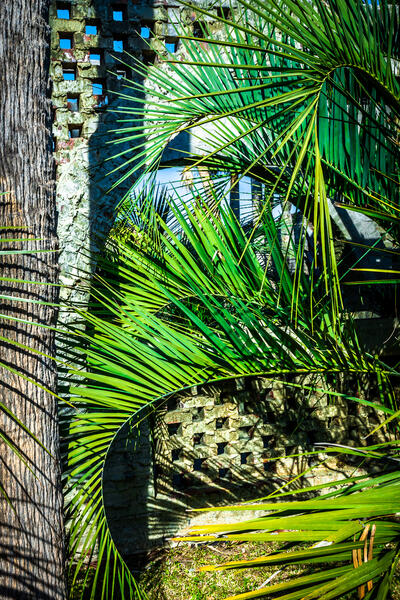 Atalaya20" x 30" Pigment Ink Photographic Print / This photograph illustrates a balance between human and plant ecosystems.The walls of Atalaya Castle hem in these wild palm fronds near the beach in South Carolina. The wildlands here have been affected by development, golf courses, and park maintenance but there are also gardens and wild parklands nearby that encourage plant ecosystems.
Atalaya20" x 30" Pigment Ink Photographic Print / This photograph illustrates a balance between human and plant ecosystems.The walls of Atalaya Castle hem in these wild palm fronds near the beach in South Carolina. The wildlands here have been affected by development, golf courses, and park maintenance but there are also gardens and wild parklands nearby that encourage plant ecosystems. -
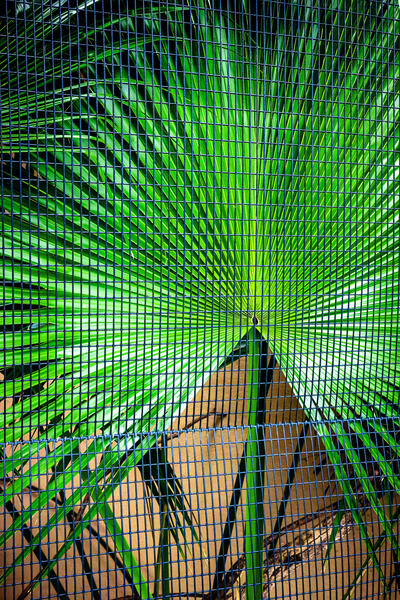 Caged Fan20" x 30" Pigment Ink Photographic Print / The dynamic nature of this photographic composition comes from competing man-made and natural textures. The fencing appears dominant, a suggestion that plant ecosystems are losing ground against the activities of man.
Caged Fan20" x 30" Pigment Ink Photographic Print / The dynamic nature of this photographic composition comes from competing man-made and natural textures. The fencing appears dominant, a suggestion that plant ecosystems are losing ground against the activities of man. -
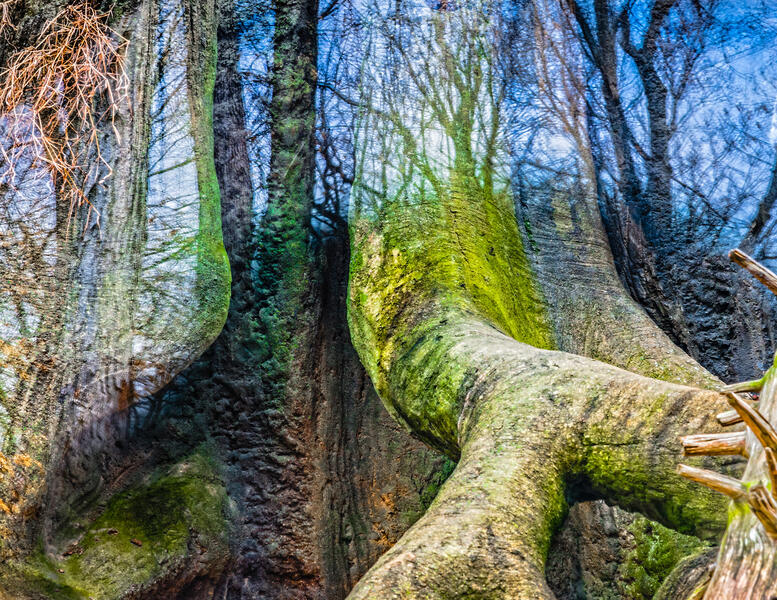 Between the Two26" x 20" Pigment Ink Photographic Print / This photograph of a forest reflection on a glass barrier in front of a dying tree trunk illustrates the continuing loss of plant systems. Old growth forests have incredible biodiversity and older trees are great carbon sinks because of their huge biomass. We need to cherish these ecosystems not exploit them.
Between the Two26" x 20" Pigment Ink Photographic Print / This photograph of a forest reflection on a glass barrier in front of a dying tree trunk illustrates the continuing loss of plant systems. Old growth forests have incredible biodiversity and older trees are great carbon sinks because of their huge biomass. We need to cherish these ecosystems not exploit them. -
 A Pretty Plastic20" x 30" Pigment Ink Photographic Print / This photograph is a fun mixture of textures, of dappled light and shade, of man-made plastic fencing and grasses. The fencing has disturbed the growing pattern of the grasses to their detriment and loss. The disappearance of the grass ecosystem is evident in this photograph.
A Pretty Plastic20" x 30" Pigment Ink Photographic Print / This photograph is a fun mixture of textures, of dappled light and shade, of man-made plastic fencing and grasses. The fencing has disturbed the growing pattern of the grasses to their detriment and loss. The disappearance of the grass ecosystem is evident in this photograph. -
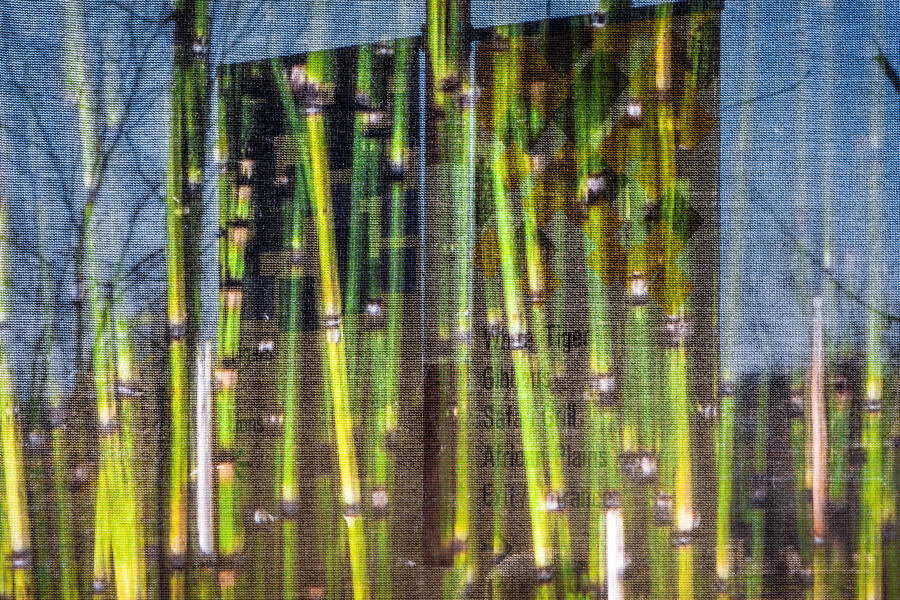 Bamboo HidingFrom the Botanics 2 series / Bamboo Hiding / 30" x 20" Pigment Ink Photographic Print / Reflection and screening create this illusion of disappearing bamboo.
Bamboo HidingFrom the Botanics 2 series / Bamboo Hiding / 30" x 20" Pigment Ink Photographic Print / Reflection and screening create this illusion of disappearing bamboo. -
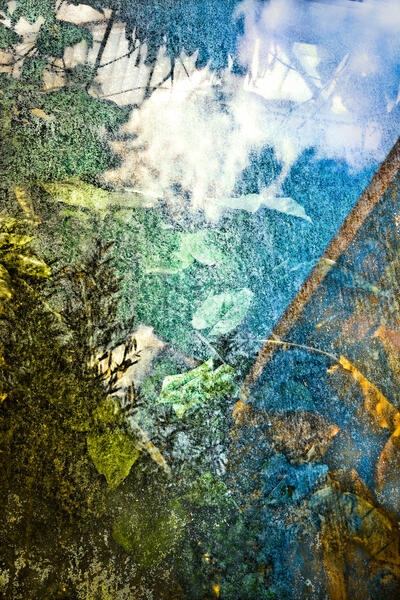 Botanic Texture20" x 30" Pigment Ink Photographic Print / The wild jumble of plants outside this greenhouse disappears in reflection, moss, and etched glass patterning. The plants are no longer distinct. Many of their forms are lost in the texture. Many species of plants will also be lost in the coming years, much to the world's detriment.
Botanic Texture20" x 30" Pigment Ink Photographic Print / The wild jumble of plants outside this greenhouse disappears in reflection, moss, and etched glass patterning. The plants are no longer distinct. Many of their forms are lost in the texture. Many species of plants will also be lost in the coming years, much to the world's detriment. -
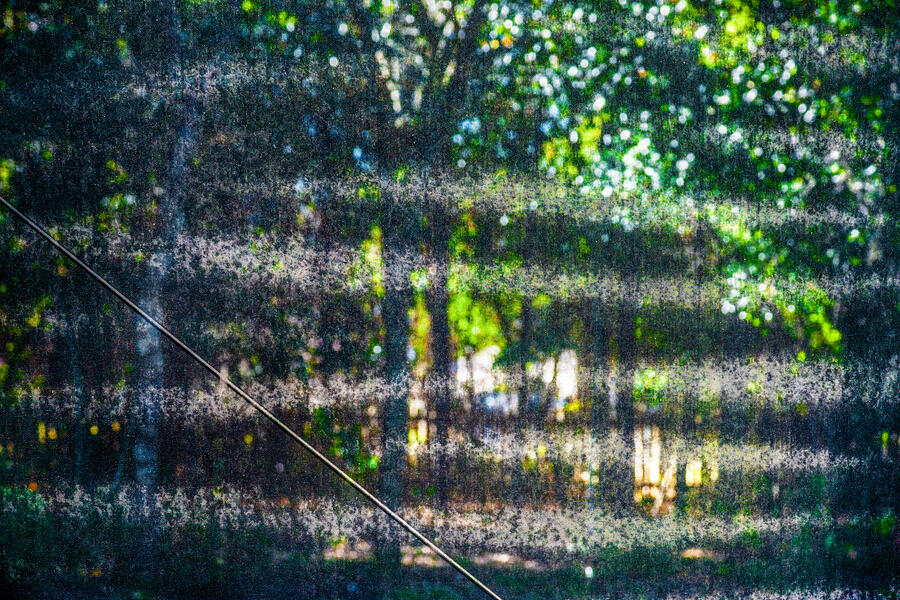 Miltons Screened Impression30" x 20" Pigment Ink Photographic Print / This is a photograph looking through the screened room of my daughter's house in Florida. The man-made materials are in focus but the forest is lost in the impressionic screen patterning. Individual trees are barely seen and leaves have disappeared. Let's try to save our plant ecosystems for the future generations of all living things.
Miltons Screened Impression30" x 20" Pigment Ink Photographic Print / This is a photograph looking through the screened room of my daughter's house in Florida. The man-made materials are in focus but the forest is lost in the impressionic screen patterning. Individual trees are barely seen and leaves have disappeared. Let's try to save our plant ecosystems for the future generations of all living things. -
The Year of Disappear - Botanics 2 Video Slideshow
